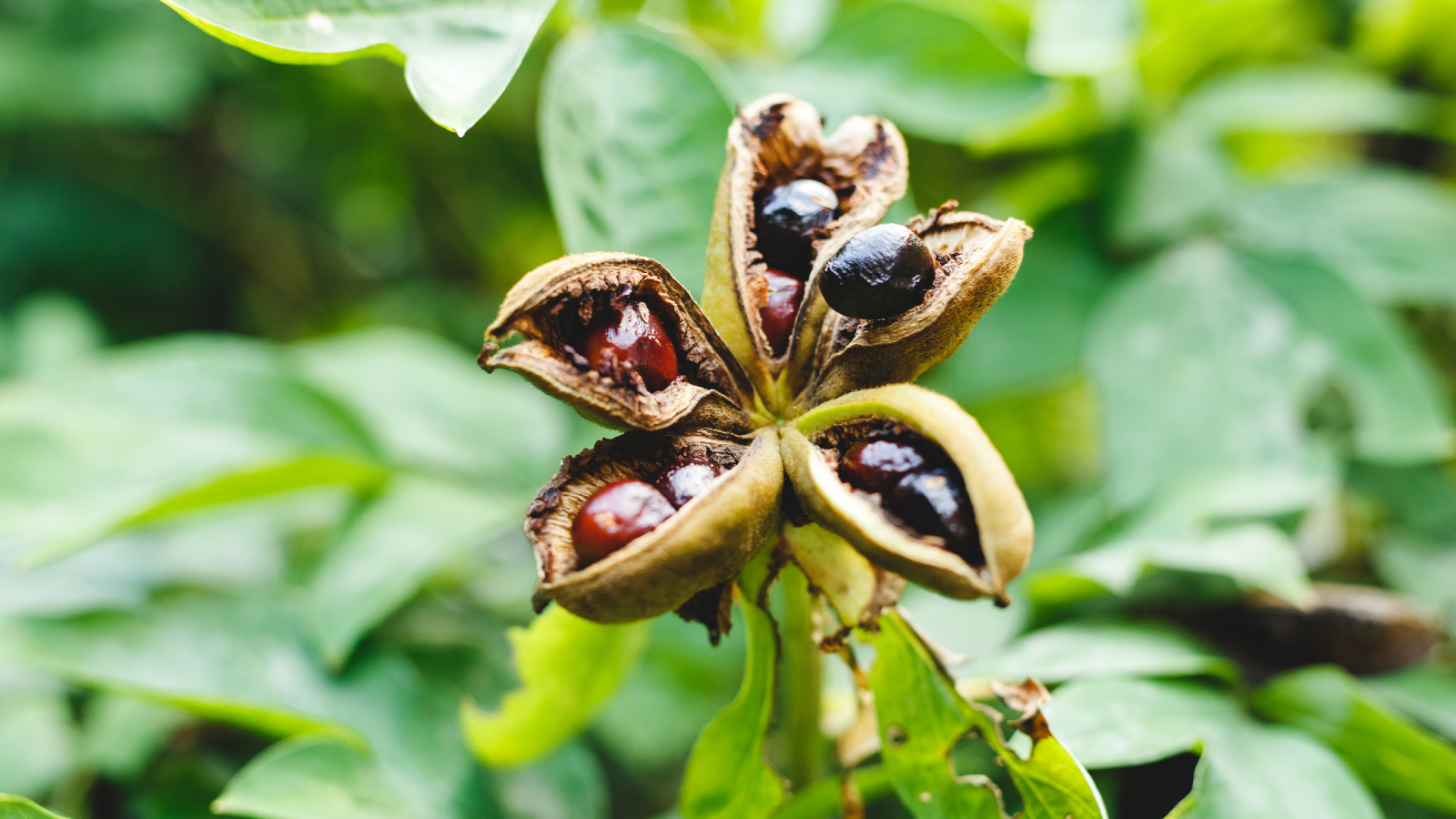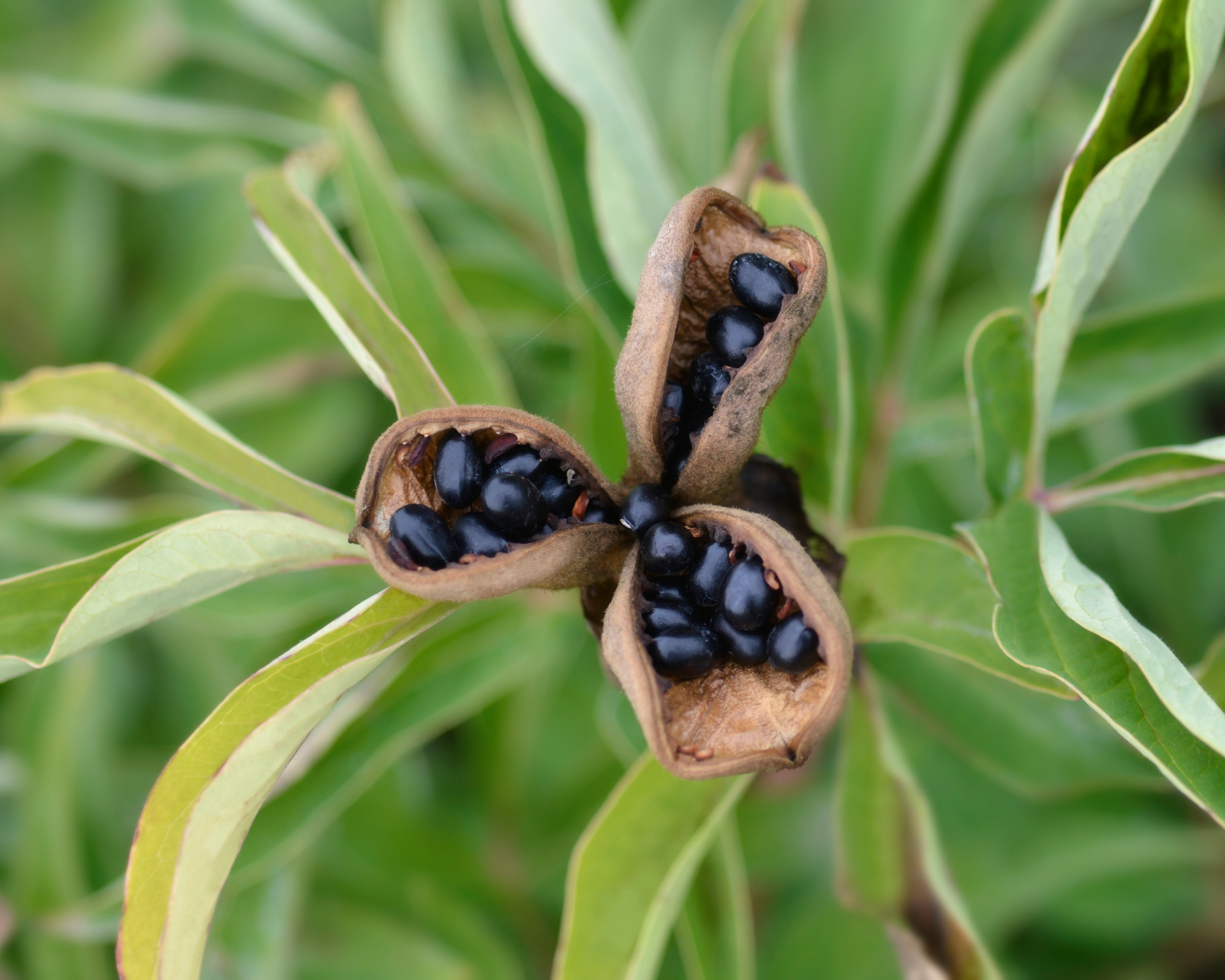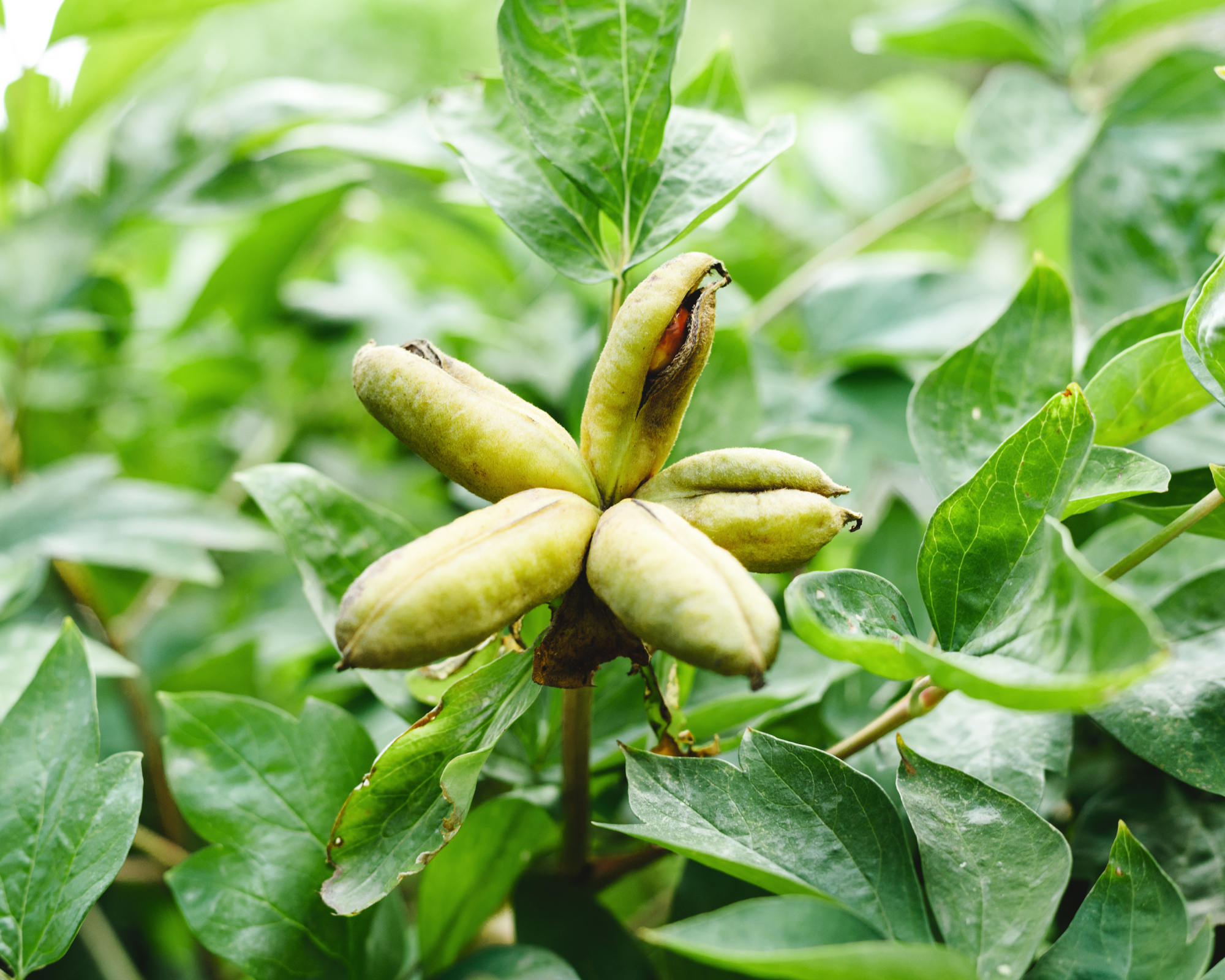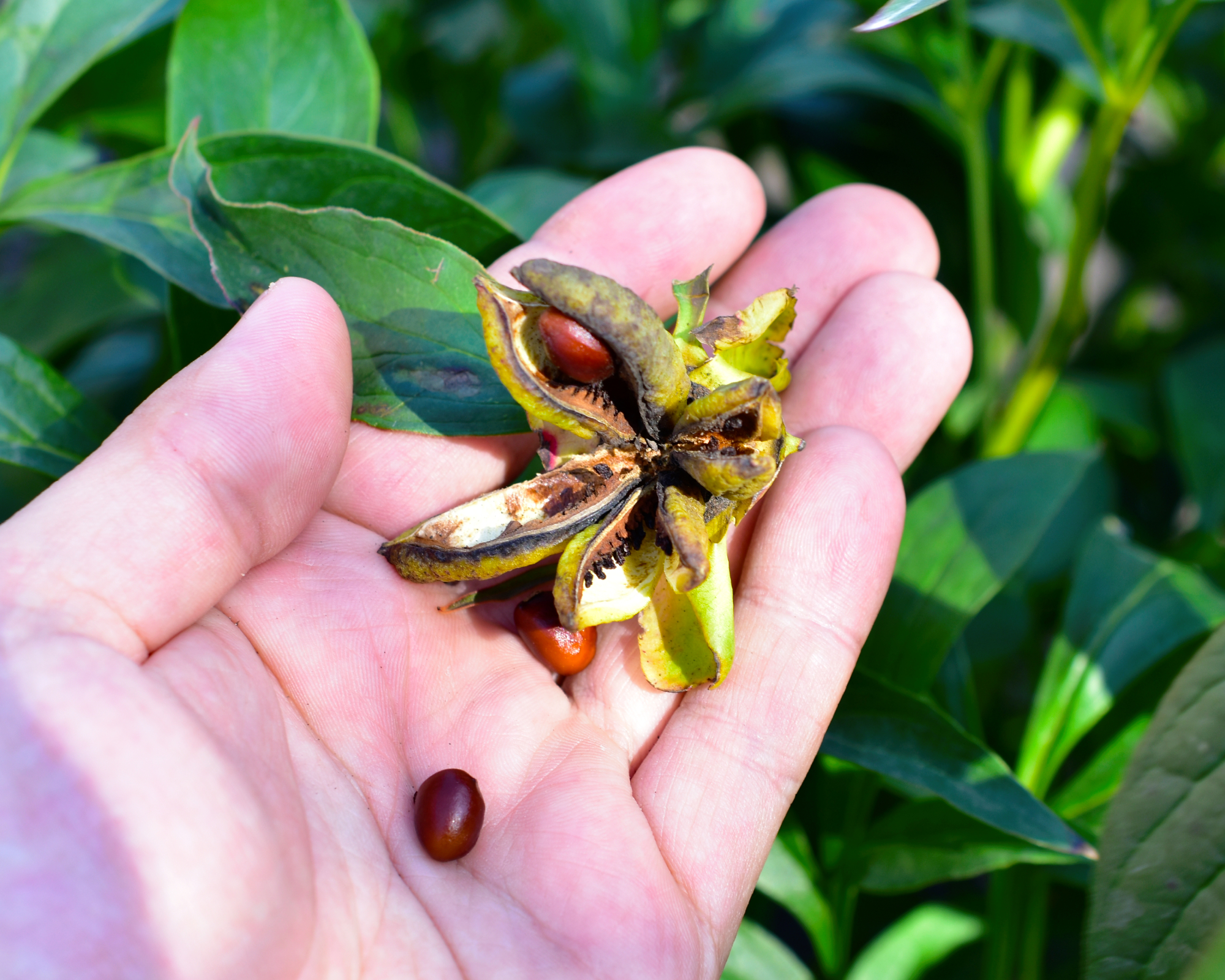Guide To Harvesting & Planting Peony Seeds: Grow Beautiful Peony Blooms For Free With Seeds From Your Own Garden
Harvesting and planting peony seeds from your garden is a fun way to grow more of these classic perennials for free! Follow this guide to go from seed to bloom.


For many gardeners, growing their own perennial plants from seed is an exciting undertaking and harvesting and planting peony seeds is no exception. Growing peonies from seed is not only a fun way to expand your garden for free, but it can result in new and never-before-seen hybrids.
Peonies are grown for their exquisite, short-lived spring blooms. After their flowers fade, peonies form clusters of wedge-shaped seed pods. As they ripen, the seed pods turn dark brown and leathery and crack open to reveal shiny, dark purple to black seeds. Seed pods can add interest to the garden as well as allow you to harvest the seeds inside to propagate your peonies.
Though learning how to propagate peonies from seed is relatively simple, you first need a firm understanding of how and when to harvest peony seeds, how to prepare seeds for planting, and how to plant seeds so they grow into strong, long-lasting peony plants.
Pros & Cons of Propagating Peonies From Seed
When propagated from seed, peony plants do not grow into true-to-type. Asexual propagation, such as via cuttings or dividing peony plants, are the only way to produce true clones of your current plants. However, you can produce new and unique bloom variations by propagating peonies seed.
Starting peonies from seed also benefits budget-savvy gardeners because it allows you to fill the landscape with lots of new plants without spending a dime. Though the advantages of harvesting and planting peony seeds are numerous, this process does have one major drawback.
The main problem is that it is time consuming. Harvesting peony seeds and germinating them takes several months and then years of patience before new plants finally bloom. Common garden peonies are slow to mature, taking five to six years to produce blooms when propagated from seed. Tree peonies and Itoh peonies mature quicker, though it is still a multi-year process.

When to Harvest Peony Seeds
Determining when to harvest peony seeds is the first step in the seed propagation process. Peony seeds start to form when pollen from one flower is introduced to another bloom in spring. As pollinated flowers fade in summer, you will see pods at the center of the blooms begin to swell and produce seeds.
Sign up for the Gardening Know How newsletter today and receive a free copy of our e-book "How to Grow Delicious Tomatoes".
These pods, or carpels, will continue to mature until it’s time to harvest them. The best time to harvest peony seeds is late summer to fall, once seed pods turn dark brown and leathery and begin to crack open.
To ensure that you don't lose any peony seeds to birds, small mammals, or the forces of nature, tie a small mesh or paper bag, available on Amazon, around each maturing seed pod before they split open. This will help catch seeds before they fall to the ground or wildlife eat them.

How to Harvest Peony Seeds
Once seed pods on peonies have a dry, papery appearance it’s time to begin harvesting seeds. Viable seeds should be large, firm, and dark in color.
If you placed bags around your splitting peony seed pods, all you need to do is collect the seeds from the bag. If you left seed pods uncovered, prune the fading pods off your plant and gently crack them open to harvest flower seeds.
Some gardeners may wonder how to harvest peony seeds from cut flowers used in arrangements, but unfortunately this is not possible. Peonies only grow from mature seeds that develop on the plant in the garden.
How to Grow Peonies From Seed
After harvesting peony seeds, place them in a bowl of water to test their viability. Viable seeds will sink. Seeds that float are not viable, so do not plant these. Store seeds in a cool, dry place or plant immediately.
Late summer or fall is the best time for planting peony seeds. Direct sow seeds outdoors for the easiest method of propagation. Alternatively, you can plant peony seeds in seed starting trays, like these pop-out reusable seed starting trays from Amazon, but you need to provide them with specific conditions to help them sprout. This process is known as seed stratification.

In nature, peonies disperse their seeds in late summer to autumn. Seeds then begin to form small roots. In winter, they lie dormant and then burst forth as spring warms the soil. To mimic this natural cycle, place seed starting trays in the refrigerator for about three months, then move them to a warm, sunny location in spring.
Another space-saving way to germinate seeds like a pro is to place harvested seeds in a plastic sandwich bag with moist vermiculite and peat. Keep the bag closed and place it in a dark location with an average temperature of 70-75 F (21-24 C) until roots begin to form. Place the bag in the crisper of your refrigerator until it’s warm enough to transplant seedlings outdoors in spring.
Frequently Asked Questions
How Long Does It Take To Soak Peony Seeds?
Freshly harvested peony seeds do not require soaking before planting. However, seeds benefit from soaking if they are dried out or if you stored them over winter. Soak seeds in room temperature water for approximately three to four days before planting.
Should I Cut The Seed Pods Off Peonies?
Allow peony seed pods to fully mature before harvesting them from the plant. This will help to ensure that seeds are viable and will germinate when you sow them. To prevent the production of seed pods, remove spent flowers immediately after bloom.
Peony Care Essentials
- These Fiskars Bypass Pruning Shears from Amazon will make peony trimming a breeze
- Back to the Roots Organic Bone Meal from Amazon will promote bigger blooms on your peony plants
- An easy-to-install drip irrigation kit from Amazon will help ensure your peonies are watered regularly at the roots

Tonya Barnett has been gardening for 13 years. Flowers are her passion. She has transformed her backyard into a cut flower garden, which she regularly chronicles on her YouTube channel http://www.youtube.com/@tonyawiththeflowers.
- Laura WaltersContent Editor
- Darcy LarumContributing Writer